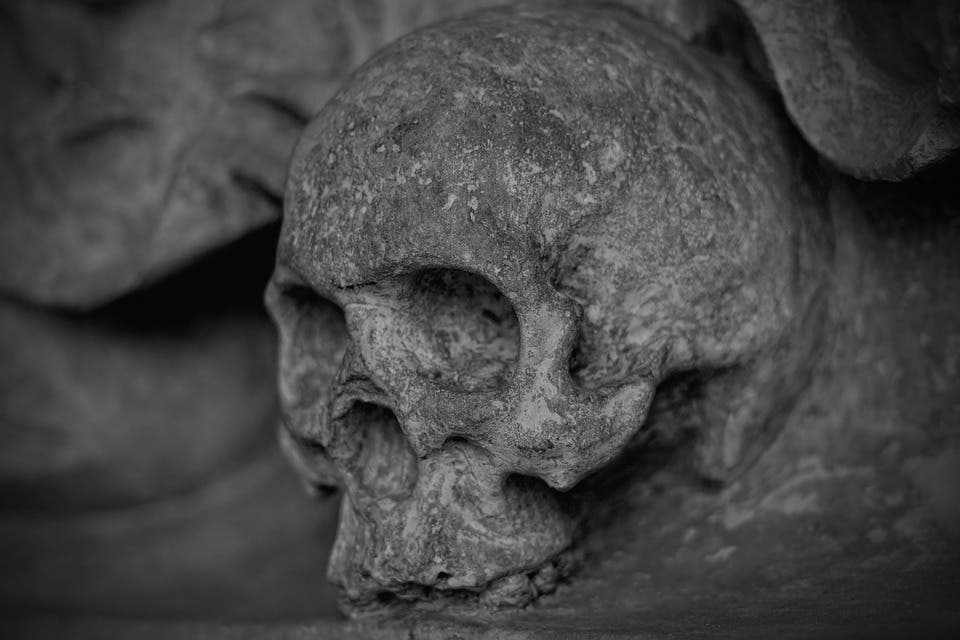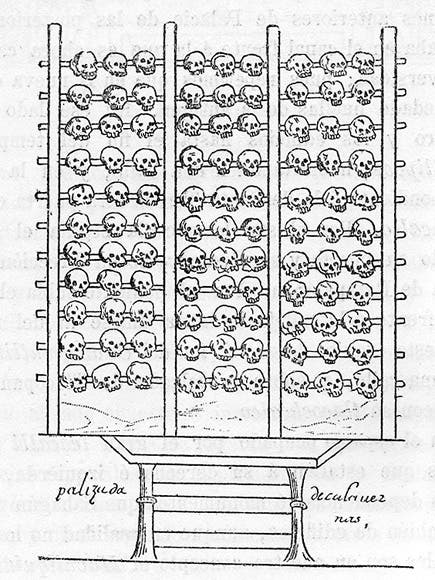Ongoing excavation works in Mexico City have confirmed the existence of a legendary, and terrible, edifice: the Aztec tower of skulls.
As Spanish soldiers first made their way to the sprawling Aztec capital of Tenochtitlan in 1521, they came upon a terrible and terrifying sight: the tzompantli. Our first recount of them come from the memoirs of one Andres de Tapia, a Spanish soldier, one of the first who came to the city under Hernan Cortez — he described an “edifice” covered in tens of thousands of skulls.
Although later described by other historians as well, the Aztec’s towers of skulls were never found, and many dismissed them as mere tales spun by soldiers boasting their glories. That is until today, as ongoing archeological digs in what is today Mexico City have revealed part of the Huey Tzompantli complex, inlaid with over 650 skulls.
The great wall of skulls
Reuters report that the ruins of the skull tower measure a staggering 6 meters in diameter, and once rose at the corner of Templo Mayor a massive temple dedicated to Huitzilopochtli, an Aztec god associated with war, the sun, and (you’ll never guess) human sacrifice. The archeologists who discovered the structure say it was likely part of a larger structure known as Huey Tzompantli (believed to loosely translate as the great skull wall or banner) which many of de Tapia’s contemporaries also described.
Tzompantli were ceremonial wooden scaffolds that many ancient Mesoamerican cultures used to display the skulls of human sacrifices. Priests would take each skull and drill two holes in it, then string them along on a long chord like beads. Rows upon rows of skulls would then be stretched between two wooden posts, forming a sheer wall of skulls dangling on top of each other.
It’s not clear why the Aztecs constructed tzompantli. Maybe it was to honor their gods, or to scare away their enemies — the latter certainly happened with the Spanish conquistadores, who were very shaken by the gruesome sight. Many accounts describe the terror their authors felt when seeing Tenochtitlan’s tzompantli for the first time.
But that isn’t the end of the story. Raul Barrera, an archaeologist from the National Institute of Anthropology and History (INAH) told Reuters that “the skulls would have been set in the tower after they had stood on public display on the tzompantli.” Each was dipped in lime and then placed like bricks in the tower’s walls. The tzompantli, with the towers made from past sacrifices in the backdrop, must’ve been quite a terrible sight back in the day.
“In this context where there are many semi-detached skulls, and where you are also seeing a tower on each side made up of skulls, it must have been shocking for the people who saw it,” INAH archaeologist Lorena Vazquez told the BBC.
Archeologists report that the skulls came from men, women, and children alike, suggesting the sacrifices weren’t only soldiers — but rather, they were picked, captured, offered, maybe even volunteered, from whole populations.
“We were expecting just men, obviously young men, as warriors would be, and the thing about the women and children is that you’d think they wouldn’t be going to war,” Rodrigo Bolanos, a biological anthropologist investigating the find, told the New York Times.
“Something is happening that we have no record of, and this is really new, a first in the Huey Tzompantli.”
Right now, the archeologists are still working on excavating the full tower.











